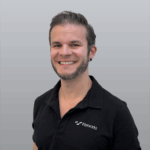It was the end of April 2023 when I got a phone call from Diego, a former and very dear colleague with great experience working with Tableau (and with data in general) from whom I personally have learned tons. He told me that he recently started directing a Data Analyst Technician Program, and that he was looking for a Tableau Trainer for one of the courses in the next cycle.
The program had been already going for more than a year, hosted by a non-profit institution in Costa Rica, whose target group was made up by 18 young women who found in this project an opportunity to develop a complete new set of skills in a booming economic field like data analytics. Among them, one could find young mothers with little to no college background nor experience in tech fields.
The idea of becoming their trainer really resonated me.
The Background
The last time Diego and I worked together went particularly well. We had the privilege to work at the office of the president of Costa Rica and implement a data analytics strategy for smart public policy using Tableau. That way, we could answer many of the questions that not only the president, but also his ministries had, and remarkably improve the way public policies in the presidential house in Costa Rica were designed and decisions were reached.
One of the last cycles of this technician program was coming, and he needed an instructor for a course in visual analytics based primarily in Tableau. He thought of me, based on our previous experience and how much we learned together that time. I turned to InterWorks to let them know of this need and to see if was something we could take on, even though their budget was very much limited.
To my pleasant surprise, given the social mission of the institution, and the social value of the program itself, InterWorks decided to take on the project and send me as their instructor, without charging a cent, as part of our own project: “InterWorks Gives Back,” one of our attempts as a company to give something back to the society. That generous offer gave me one of the greatest teaching opportunities I’ve had so far, not only in data but in general.
The Training
We started in late May and from the beginning, I had the pleasure to meet a group of very smart young women so eager to learn that it motivated me to develop the best course and to teach them as much as I could. They already had been learning about data for a few cycles, so they were no beginners. They even had a previous introductory course on Tableau, so that allowed me to raise the level of difficulty and demand a lot from them. We started doing three very deep sessions on Tableau Prep and develop a data-prep project with it, which I personally believe is great tool to gain some independence on the data side, and also to understand a lot more how data sources function.
Afterwards we dove deep into Tableau Desktop and into almost every topic from the typical DI and DII courses. But besides the classes, they had to develop two not-so-simple homework and a final dashboarding project. Apart from the exercises themselves, part of what raised the difficulty level was that all homework and projects were writing and had to be presented in English. Even though the course was fully taught in Spanish (both their birth language and mine as well), we were well aware that English is key to increase their job opportunities and to improve their resume, so I implemented this in order to strengthen their contact with the language and to broaden their vocabulary.
In our last session, they had to present their dashboards in front of the whole group and tell a short story with a couple of interesting insights that could be derived from them. Afterwards they would get comments, questions and feedback from us. That day was a particularly good opportunity to discuss and apply what we had learned about dashboarding and visual analytics best practices.
Those hours in class, and the extra hours they had to invest outside of the course really paid off: I could see a noticeable improvement on not only their skills and abilities using the tool, but in generally understanding data. That was, for me, the most fulfilling part: to see how their understanding, skills and their personal motivation to work with data increased remarkably.
At the end, I got not only a very sincere thanks form all the girls, but also the satisfaction of knowing that we brought something useful into their professional lives. Furthermore, I feel as though we brought even some inspiration for them to keep fighting for what they want and to draw some new life goals.
Thanks, InterWorks and Parque La Libertad for creating this!

